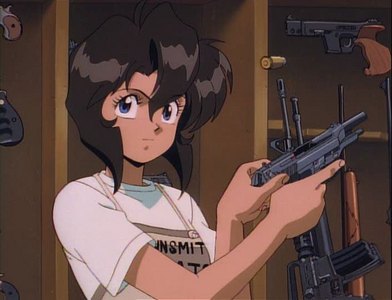 Thinking about 1942, it’s a game that is front and center in my mind when someone brings up Capcom. It’s also one that I instantly associate with going to arcades during the 1980s. As such, I instantly date myself when it comes to the game because most people conjure up images of Resident Evil, Devil May Cry, or maybe Street Fighter when the name “Capcom” is uttered these days. Not to mention, arcades are a relic of the past for many, something that people increasingly only know about because of stories from their parents.
Thinking about 1942, it’s a game that is front and center in my mind when someone brings up Capcom. It’s also one that I instantly associate with going to arcades during the 1980s. As such, I instantly date myself when it comes to the game because most people conjure up images of Resident Evil, Devil May Cry, or maybe Street Fighter when the name “Capcom” is uttered these days. Not to mention, arcades are a relic of the past for many, something that people increasingly only know about because of stories from their parents.
As a kid growing up, most of the arcades that I went to had a 1942 cabinet in them. I didn’t even have to look for the thing, it’s music could be heard the second one entered the place with its very simplistic mix of snare drums and what sounded like a whistle, belting out a very military themed tune. Well, perhaps “belting out” is going a little bit far, as the technology was still limited at the time insofar as generating music goes circa 1984. There’s an old interview with the game’s composer, Ayako Mori, floating around where she mentions how limited technology’s ability was to make music for games in the early 80s. I certainly agree that it was still the age of basic bleeps and bloops, but what she did with 1942 still made for a very memorable tune.
Another thing I’ll never forget about the game is the sheer number of quarters that I’ve pumped into it over the years. Of course, this was in part because I really like it. However, it’s also in part because I never got terribly good at the game. It was the 80s after all and arcade games were designed to devour those things back then. Eventually, I got to the point where I’d be quite pleased with myself if I managed to survive until a level with a decent amount of land passing beneath my P-38, which was no mean feat in its own right. Getting further than that never really materialized, but there is a part of me that would actually like to finish the game with one credit some time before I die.
While playing the game, it’s easy to see that the developers were experimenting with how they wanted to approach the genre to some extent. First of all, quite a lot of enemies are thrown at the player. By the second or third level, bullets are all over the place while your airplane is being swarmed by smaller planes. It’s usually around this point that one or two big planes will fly on-screen, tempting players to shoot them down for big points amidst the maelstrom swirling around them.
 Second, there are some nice little touches to 1942. On a basic, aesthetic level it’s nice to see the P-38 slowly tilt as if a player moves it to the far left or right of the screen. It sounds like a trivial thing nowadays, but one rarely saw this sort of thing back in the 80s, as planes and ships often stayed flat as they flew around the screen in shoot ‘em ups during this time.
Second, there are some nice little touches to 1942. On a basic, aesthetic level it’s nice to see the P-38 slowly tilt as if a player moves it to the far left or right of the screen. It sounds like a trivial thing nowadays, but one rarely saw this sort of thing back in the 80s, as planes and ships often stayed flat as they flew around the screen in shoot ‘em ups during this time.
On a more practical level, players were given the option to “roll” with their plane a limited number of times. This allowed the plane to do a loop whereby it could avoid being hit by a bullet or prevent a collision with an enemy plane. As the genre evolved, developers looked for more and more uses for buttons on the arcade machine. There were games like Dragon Spirit and Xevious that had one button for air attacks and another for ground attacks. In later years, it became very common to have one button for normal attacks and another for bombs. 1942, however, was a unique case with its rolls as an alternate ability to firing off the plane’s main guns.
As the years wore on, and the game grew in popularity, 1942 inevitably made its way to various home consoles including the NES, MSX, and PC-88. Decades later, it showed up on a number of classic compilations from Capcom. For me, though, its original arcade incarnation will always be my favorite. Sure, it gobbled up my quarters at a blistering pace, but the game is so intertwined with my early arcade-going experiences and the good times that I had in those places that I’ll always have fond memories of that version of the game.
 As anime became more and more popular in the West during the 90s, various companies went to great lengths working on bringing legions of shows to North America. By the end of that decade, those interested in the medium had an impressive selection of shows to choose from on DVD and VHS. Whether it was a full length series or a smaller, lesser known OVA, there was a lot to choose from.
As anime became more and more popular in the West during the 90s, various companies went to great lengths working on bringing legions of shows to North America. By the end of that decade, those interested in the medium had an impressive selection of shows to choose from on DVD and VHS. Whether it was a full length series or a smaller, lesser known OVA, there was a lot to choose from. The two are joined by a number of supporting characters like their friend Becky, who is also one of their main sources for information, as well as ATF agent Bill Collins who coerces Rally and May to help him with his investigation of the gun smuggling ring. There’s also the show’s main villain, Natasha Radinov.
The two are joined by a number of supporting characters like their friend Becky, who is also one of their main sources for information, as well as ATF agent Bill Collins who coerces Rally and May to help him with his investigation of the gun smuggling ring. There’s also the show’s main villain, Natasha Radinov. With that, it’s worth noting that the art in Gunsmith Cats is very good. Given that it’s by Kenichi Sonoda, there’s a very distinctive style at play here. He was fairly popular in the 80s and 90s, so one could find his stuff pop up from time to time in anime, another good example being Gall Force in the mid-80s (a series I’m rather tempted to discuss some time in the future). There was a certain round, petite quality to many of his character designs, particularly women. It could get almost cutesy in a way that actually helped elevate comedic scenes. That isn’t to say that he did this across the board. Sonoda was plenty capable of making more traditional-looking characters as well, case in point being Bill Collins.
With that, it’s worth noting that the art in Gunsmith Cats is very good. Given that it’s by Kenichi Sonoda, there’s a very distinctive style at play here. He was fairly popular in the 80s and 90s, so one could find his stuff pop up from time to time in anime, another good example being Gall Force in the mid-80s (a series I’m rather tempted to discuss some time in the future). There was a certain round, petite quality to many of his character designs, particularly women. It could get almost cutesy in a way that actually helped elevate comedic scenes. That isn’t to say that he did this across the board. Sonoda was plenty capable of making more traditional-looking characters as well, case in point being Bill Collins.